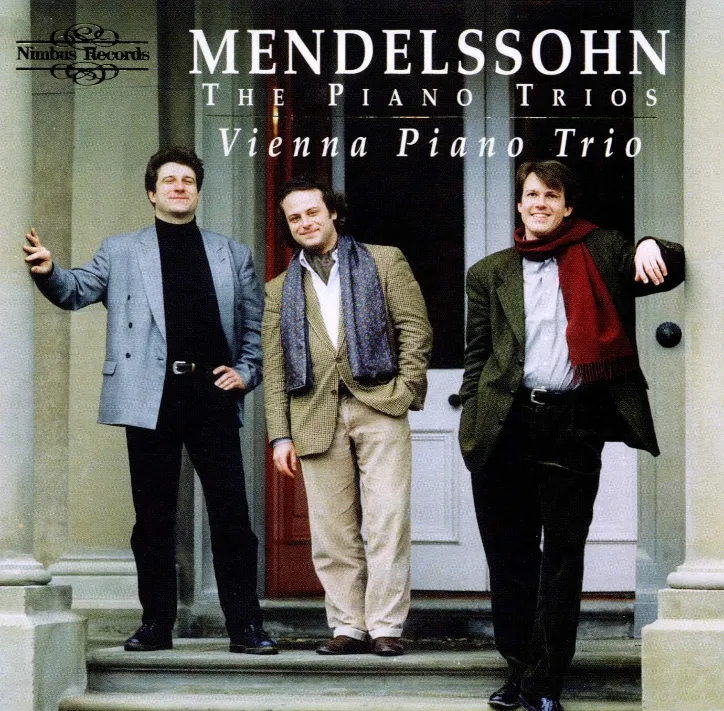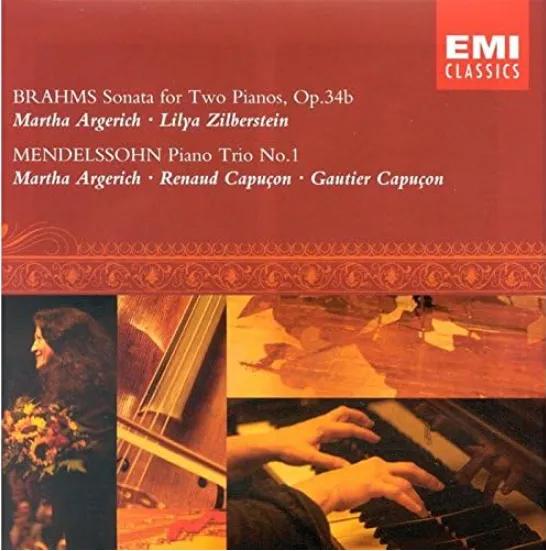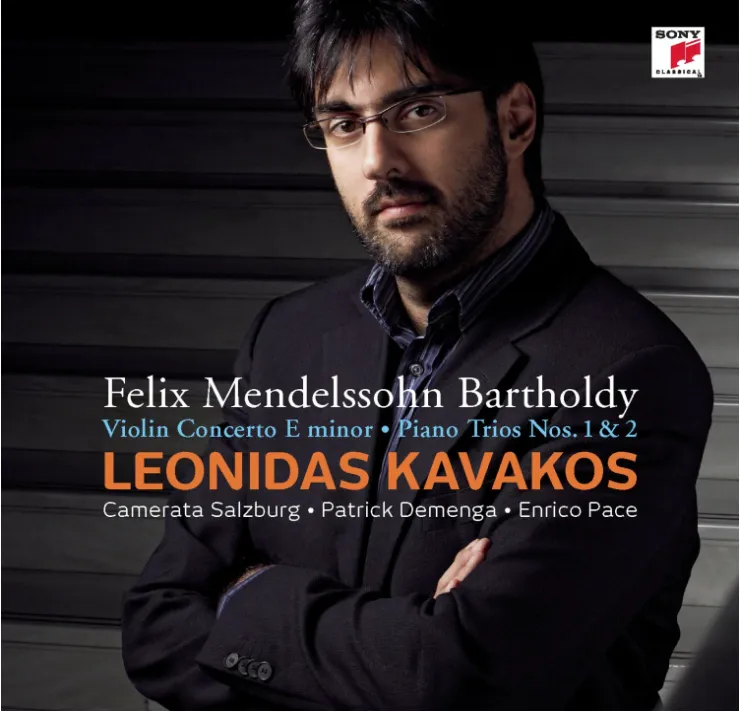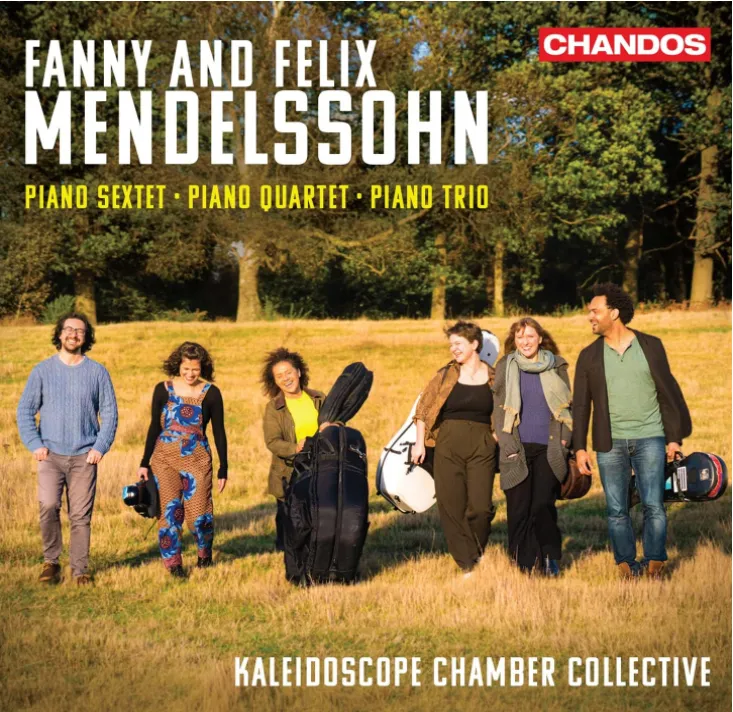It's one of the 19th century's best loved chamber music works. But what's the story behind Mendelssohn's radiant Piano Trio No. 1, and which are the work's best recordings? Read on for our guide to the Mendelssohn Piano Trio No. 1.
- What is chamber music?
- These are the 2024 BBC Music Magazine Chamber Award nominees
- Review: Piano Trio No. 1 performed by Jeremy Denk, Steven Isserlis and Joshua Bell
When did Mendelssohn write his Piano Trio No. 1?
Mendelssohn’s talents as both a performer and composer were prodigious and precocious – gifts that inspired spellbinding works such as the Octet, written, remarkably, at 16 years old. It’s no coincidence then that when reviewing the D minor Piano Trio in the Neue Zeitschrift für Musik, Robert Schumann claimed that Mendelssohn was the ‘Mozart of the 19th century’ and that in this work he achieved a ‘sustained interweaving of themes and sure mastery of form’, as well as a ‘lively excitement and joyful brilliance’.
The Trio was premiered at the Leipzig Gewandhaus on 1 February 1840, with the composer himself as pianist, playing alongside violinist Ferdinand David and cellist Carl Wittmann. In his Life of Mendelssohn, WA Lampadius recalled the exhilaration of hearing this work for the first time: ‘It is a true mirror of Mendelssohn in his most spiritual minded and deepest mood. The Trio was received with tumultuous applause.’
Why is Mendelssohn's Piano Trio No. 1 so special?
So, just what is so special about the Mendelssohn Piano Trio No. 1? From its first airing, the work was a real crowd-pleaser, with dazzling virtuosity matched by compelling melodic charm. An unsettled turbulence infuses the music, which nevertheless saves a convincing optimism for the end of the Finale.
The piano part was obviously conceived for his own skills, which were legion. In a letter to his sister and fellow composer Fanny Mendelssohn, the composer reveals that the piano part for the first London performance in 1844 had not materialised, necessitating him playing the music from memory at a time when this was rarely done. ‘Never mind,’ he said to the page turner. ‘Just put a book on the piano and turn from time to time so I don’t look as though I played by heart.’ It was another example of his brilliance.
What other talents did Mendelssohn have?
Accomplished as both a violinist and viola player, an international level pianist, chess player and painter, it seemed as if there was nothing at which Mendelssohn couldn’t excel. But the completion of a trio took a long time to reach fruition.
In 1832 he confided to Fanny that he was hoping in the near future to compose a couple of good trios… yet it was six years later, after he wrote to his friend Ferdinand Hiller, that he embarked on this very project. The first sketches were made in February 1839, but Mendelssohn really focussed on the work in the summer of the same year. For us lesser mortals, it is gratifying to know that he actually had to work quite hard at the Trio, refining and reworking passages to forge the masterpiece we know today.
One issue which caused him problems was the piano part. As Hiller recalled, ‘Mendelssohn had just finished his great D minor Trio, and played it to me. I was tremendously impressed with the fire and spirit of the whole thing. But I had one small misgiving. Certain passages seemed somewhat old-fashioned.’
He was referring here to the fact that Mendelssohn’s writing seemed unadventurous in comparison with the new virtuoso piano styles of Liszt and Chopin that were then all the rage. Initially, Mendelssohn was resistant to changes, and sensitive to the criticism. ‘Do you think that would make the Trio any better?’ he asked. Hiller replied, ‘You have often told me, and proved by your actions that the smallest touch of the brush must not be despised.’
Mendelssohn did indeed rewrite the Trio. Although the melodies remain intact, the piano part is more virtuosic, with harmonic changes and some significant rewriting of the middle section of the first movement. A second theme is also added to the second movement, and generally he makes the work more cohesive. The final version was published in April 1840.
Part of the perception of his music being perceived as ‘old-fashioned’ stems from Mendelssohn’s veneration of earlier composers such as JS Bach and Beethoven. But he also forges ahead into new realms, extending the scope and expressive range of the string writing. Alongside his supreme control of structure, he is a melodist extraordinaire – it’s one of the captivating qualities of his First Piano
Trio, where he masterfully combines a restless Romanticism with clarity of texture and form.
- How Mendelssohn helped bring Bach's St Matthew Passion back to life
- Five Beethoven works to discover
- Beethoven: a guide to his symphonies
The first movement is unsettled from the start, with the cello’s searching melody marked ed agitato. A tangible restlessness defines the invention – a beautiful contrast to the ‘Song without words’ intimate style of the ensuing Andante con moto tranquillo. Here, the captivating opening melody invites you to an inner world, with lovely dialogues between the violin and cello, although even here a spirit of yearning defines the middle section.
We are then awakened by a mercurial Scherzo that dances across the pages with astonishing speed and fantasy, the piano part sprinkled with muted and capricious accents. By its definition, the rondo Finale presents a main theme interspersed with contrasting ideas. The searching melodies of the opening movement seem to find resolution near the conclusion as the mood adeptly turns to a major key, sunlight and optimism characterising the closing bravura passages.
The best recording of Mendelssohn Piano Trio No. 1

Vienna Piano Trio
Stefan Mendel (piano), Wolfgang Redik (violin), Marcus Trefny (cello)
Nimbus NI5553
Fathoming a catalogue heaving with stellar recordings of this work is like being blinded by sparkling jewels in Aladdin’s Cave. Given the wealth of recent artists that have recorded it, older releases with problematic sound don’t really compete – despite this, some of the greatest violinists, such as Jascha Heifetz and David Oistrakh, for example, have much to offer in their respective recordings.
How though, might Mendelssohn have interpreted his Trio? Contemporary descriptions of his playing prove illuminating in furnishing some answers as to which recordings might best serve this music. Clara Schumann described the composer’s own performances as ‘one of the most delightful artistic experiences in my life. He would sometimes take the tempos very quick, but never to the prejudice of the music.’ Ferdinand Hiller states that ‘he possessed great skill, certainty, power and rapidity of execution.’
A former pupil of Mendelssohn, Otto Goldschmidt refers to his ‘subtle mechanism, developed with a lightness of the wrist; never from the arms’. This highlights his remarkable facility, plus his preference for faster yet flexible tempos, the latter exemplified by his dislike of the metronome which he described ‘as an utterly useless invention. A musician who can’t work out the tempo of a piece just by looking at it is a blockhead.’
These comments give clues as to the interpretations that probably come closest to fulfilling his ideals. In this respect, the beautifully recorded version by the Vienna Piano Trio from 20 years ago still leads the field for fervour and commitment. There’s a real sense of forward momentum in the opening movement that generates a feeling of troubled Romanticism, which this ensemble captures par excellence.
In addition to the urgency with which the musicians project Mendelssohn’s ideas, we get a captivating blend of perfectly balanced and blended ensemble coexisting with a refined soloistic approach that infuses the intoxicating string melodies with burnished golden tones.
The fearsomely difficult technical hurdles of the Scherzo pose no problems for the Vienna Piano Trio, who bring a feathery brilliance and a chameleon-like skill to their performance, being soloist or accompanist at the drop of a hat. And an intimate whispering melody graces their approach to the slow movement, in contrast to a triumphant and robust Finale – simply a roller coaster – which reflects a compelling voyage from darkness to light.
Other best recordings of Mendelssohn Piano Trio No. 1

Martha Argerich (piano), Renaud Capuçon (violin), Gautier Capuçon (cello)
This glittering line-up is exhilarating in a thrilling live recording from the Lugano Festival in 2002. It is vintage Argerich, with a whirlwind mercurial brilliance that defines the whole performance. Their Scherzo scampers away at lightning speed with highly defined accenting; phrasing is masterfully shaped and expressive, with an exquisitely delineated Andante. The only slight caveat is a slightly leisurely opening that misses the unresolved searching. Elsewhere, you are on the edge of your seat. (Warner 557 5042)
Enrico Pace (piano), Leonidas Kavakos (violin), Patrick Demenga (cello)

A Classically infused reading, with lean yet beautifully shaped lines. The players are mesmerising in the Andante, with an exquisitely connected right-hand piano melody and poetic intimacy from the strings, while the legion demands of the virtuosic Scherzo are delivered with consummate ease and humour. A fervent interpretation of the Finale caps it all off with a mesmerising bravura close. Recorded in 2009, this ensemble offers the polish of an established trio but the imaginative edge of top soloists. (Sony 88697433032)
Van Baerle Trio
This performance from 2014 has a delightful lightness of texture helped by the use of a Fazioli piano. The playing is infused with energy and exuberance, and polished ensemble combines with individual and expressive shaping of the virtuosic invention. There’s a real freshness to the beautifully projected Andante which is followed by a breathlessly capricious Scherzo. A welcome bonus is the world premiere recording of the first version of the Trio from the 1839 manuscript, which offers a fascinating insight into Mendelssohn’s creative process. (Challenge Classics CC72662)
Other works like Mendelssohn's Piano Trio No. 1
If you find yourself beguiled by the mix of dazzling melodies and Romantic turbulence that characterise the Mendelssohn Piano Trio No. 1, here are five more works that inhabit a similar soundworld. If you enjoy Mendelssohn's First Piano Trio, chances are you'll like these too.
Felix Mendelssohn's Piano Trio No. 2
Five years after Felix Mendelssohn’s First Piano Trio came No. 2. Again, the journey takes us from nervy minor to brightly confident major over four movements, in this instance famously rounded off by the exuberant quotation of the chorale melody ‘Gelobet seist du, Jesu Christ’.
Recommended recording: Trio Wanderer Harmonia Mundi HMC901961
Fanny Mendelssohn's Piano Trio in D minor

A tinge of regret accompanies listening to Fanny Mendelssohn’s Piano Trio in D minor, in which two stormy, scurrying outer movements frame a more aquiescent Andante espressivo and brief but lovely Lied. At the time of its first performance in April 1847, the composer had just started to enjoy the sense of self-confidence and freedom of publishing her own works but, alas, had just one month left before succumbing to a stroke at 41.
Recommended recording: Kaleidoscope Chamber Collective Chandos CHAN 20256
Clara Schumann's Piano Trio in G minor
That death robbed Clara Schumann of the intended dedicatee of her elegant Piano Trio in G minor, premiered earlier that same year. Though preeminent as a pianist herself, Schumann here divides the workload equally between all three instruments, each of which enjoys its melodic moment in the sun. The work inspired and influenced her husband Robert, who then started work on the first of his own three piano trios.
Recommended recording: Boulanger Trio Ars Production ARS38048
Louis Spohr's Piano Trio No. 1
The mutual admiration between Felix Mendelssohn and violinist and composer Louis Spohr extended to dedicating works to each other. Spohr, the older by 25 years, was a slow starter when it came to piano trios, having turned 57 when he penned his First (Op. 119) in 1841. A largely amiable work, though technically demanding in its own twisting, turning way, it clearly gave the German the bug, as four further piano trios would soon follow.
Recommended recording: Hartley Piano Trio Naxos 8.553206
Ferdinand Hiller's Piano Trio No. 6
And what of Ferdinand Hiller, whose sage advice made such a mark on Felix M’s First Piano Trio? Much of his own chamber music has fallen by the wayside, though his characterful Piano Trio No. 6 of 1879 is well worth a listen. Also known as his Serenade No. 2, the work’s five movements include a delightfully sprightly opening Vorspiel (Prelude) followed by quite the friskiest March you’re ever likely to encounter.
Recommended recording: Rautio Piano Trio Resonus Classics RES10203
